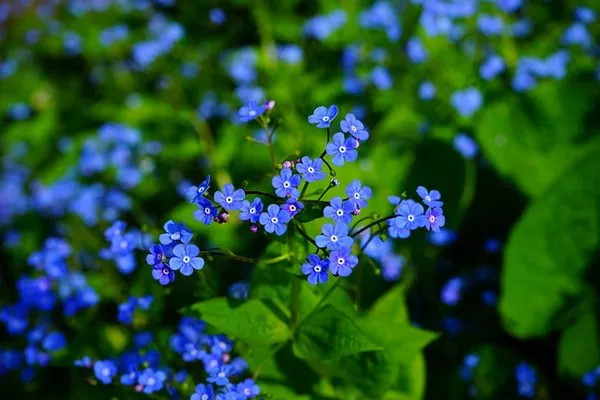Have you ever glanced out at your lawn and noticed a sprinkling of delicate blue flowers dotting the green expanse? These little blue blooms, often overlooked amidst the hustle and bustle of daily life, hold a subtle charm that captivates the observant eye. While their presence may seem fleeting, understanding these diminutive wonders can offer insights into the ecology of your lawn and the broader natural world. In this article, we delve into the world of these little blue flowers, unraveling their identity, significance, and ecological role.
The Enigmatic Presence: Identifying the Little Blue Flowers
Before diving into the intricacies of these petite blossoms, it’s essential to identify them accurately. The little blue flowers that adorn lawns belong to a group of plants known as “lawn weeds.” Among the most common varieties are Speedwell (Veronica spp.) and Forget-me-nots (Myosotis spp.), both of which feature delicate blue flowers that add a charming touch to the green carpet of grass.
Speedwell, characterized by its small, four-petaled flowers arranged along slender stems, thrives in a variety of conditions, from sun-drenched lawns to shady areas beneath trees. Forget-me-nots, on the other hand, boast clusters of tiny blue flowers with yellow centers, often accompanied by fuzzy green foliage. Despite their diminutive size, both species can form dense patches in lawns, catching the eye with their vibrant hue amidst the sea of green.
Unraveling the Significance: Ecological Insights
While some may view these little blue flowers as mere nuisances marring the perfection of a manicured lawn, their presence actually offers valuable ecological insights. These plants play crucial roles in supporting biodiversity and ecosystem health, contributing to the intricate web of life that sustains our planet.
First and foremost, these tiny blooms provide essential food sources for pollinators, including bees, butterflies, and other insects. As they flit from flower to flower in search of nectar and pollen, these pollinators facilitate the reproduction of countless plant species, ensuring the continuation of diverse ecosystems. By harboring little blue flowers in your lawn, you’re providing vital sustenance for these beneficial insects, helping to bolster local biodiversity.
Moreover, the presence of these flowers can serve as indicators of soil health and ecological balance. Certain species, such as Speedwell, thrive in compacted or disturbed soils, helping to stabilize the ground and prevent erosion. Others, like Forget-me-nots, prefer moist, fertile soil conditions, indicating areas where water retention and nutrient cycling may be optimal. By observing the distribution and abundance of these little blue flowers, you can glean valuable insights into the underlying conditions of your lawn and take steps to enhance its ecological resilience.
Cultivating Harmony: Embracing Diversity in Lawn Management
In our quest for the perfect lawn, it’s easy to fall into the trap of monoculture, striving to eradicate any plant that deviates from the uniform carpet of grass. However, this approach overlooks the inherent value of biodiversity and the ecological services provided by a diverse array of plant species.
Instead of viewing little blue flowers as adversaries to be vanquished, why not embrace them as integral components of a healthy, vibrant ecosystem? By adopting a more holistic approach to lawn management, you can cultivate a harmonious balance between grass and wildflowers, fostering a landscape that teems with life and vitality.
One way to encourage the proliferation of little blue flowers is to adjust your mowing practices. Rather than mowing your lawn to the ground in pursuit of uniformity, consider raising the cutting height and allowing certain areas to grow wild. This creates pockets of habitat where wildflowers can flourish, providing valuable resources for pollinators and other wildlife.
Additionally, you can incorporate native wildflower species into your lawn or designate specific areas for naturalization. Native wildflowers are well-adapted to the local climate and soil conditions, making them resilient and low-maintenance additions to your landscape. By sowing seeds or planting plugs of native species such as Blue-eyed grass (Sisyrinchium spp.) or Blue Flax (Linum lewisii), you can enhance the diversity and beauty of your lawn while supporting native pollinators and other wildlife.
Conclusion
In conclusion, the little blue flowers that grace your lawn are not mere intruders but rather integral contributors to the tapestry of life that surrounds us. By recognizing their significance and embracing their presence, we can cultivate landscapes that are not only aesthetically pleasing but also ecologically rich and resilient.
So, the next time you gaze out at your lawn and spot those delicate blue blooms dancing in the breeze, take a moment to appreciate the beauty and complexity of the natural world. For in the midst of those tiny flowers lies a wealth of ecological wonder waiting to be discovered and cherished.


